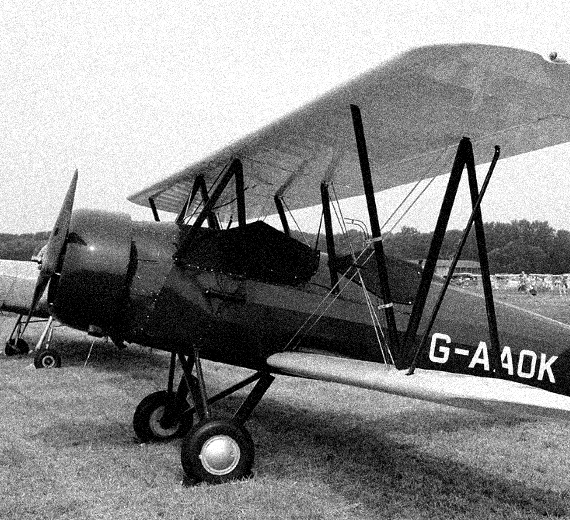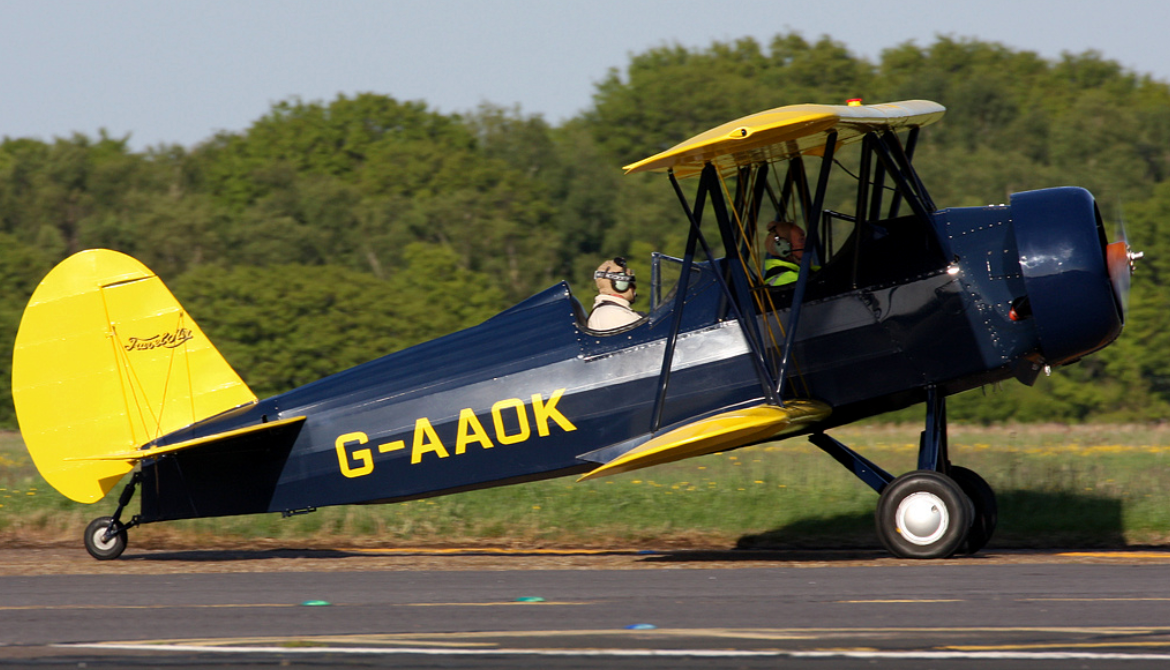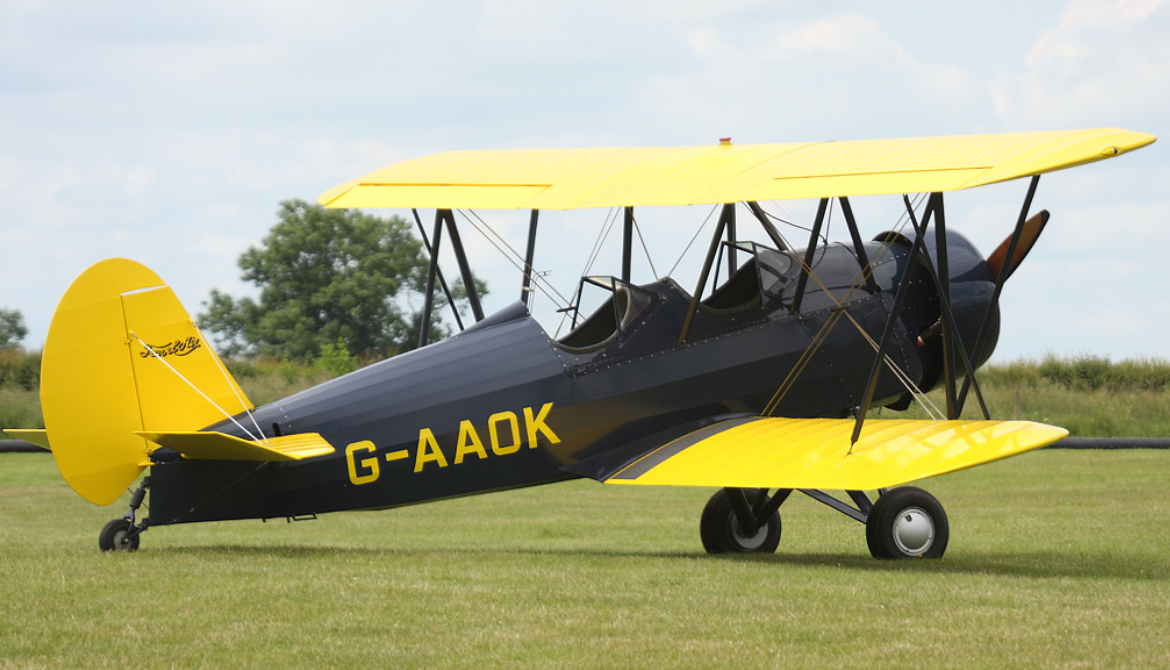.
History Curtiss Wright
CW-12 Sport Trainer and CW-16 Light Sport
First Flight 1931
Status Some Airworthy In 2009

The Curtiss-Wright CW-12 Sport Trainer and CW-16 Light Sport (also marketed under the Travel Air brand that Curtiss-Wright had recently acquired) were high-performance training aircraft designed by Herbert Rawdon and Ted Wells and built in the United States in the early 1930s.
The CW-12 and CW-16 shared the same basic design as conventional single-bay biplanes with staggered wings braced with N-struts. The pilot and instructor sat in tandem, open cockpits, the forward cockpit of the CW-12 having a single seat, while the CW-16's forward cockpit could seat two passengers side-by-side. Both versions of the aircraft were available in a variety of engine choices, and some CW-16s were exported as trainers to the air forces of Bolivia and Ecuador.
Variants

- CW-12
- CW-12K - version powered by 125 hp (93 kW) Kinner K-5 engine. Two built.
- CW-12Q - version powered by 90 hp (67 kW) Wright-built de Havilland Gipsy. 26 built.
- CW-12W - version powered by 110 hp (82 kW) Warner Scarab. 12 built + 1 replica
- CW-16
- CW-16E - version powered by Wright J-6 Whirlwind 5 engine. (10 built).
- CW-16K - version powered by Kinner B-5 engine (11 built).
- CW-16W - version powered by Warner Scarab engine (1 built
0
KmCeiling
0
KmCombat RANGE
0
Km/hAircraft Speed
0
Max Crew
Photo Gallery
Curtiss Wright
CW-12 Sport Trainer and CW-16 Light Sport
First Flight 1931
Status Some Airworthy In 2009


Curtiss Wright
CW-12 Sport Trainer and CW-16 Light Sport
General Info
-
-
- Crew: 2
- Length: 21 ft 5 in (6.53 m)
- Wingspan: 28 ft 10 in (8.79 m)
- Height: 8 ft 10 in (2.69 m)
- Wing area: 206 sq ft (19.1 m2)
-
Powerplant
-
-
- Empty weight: 1,071 lb (486 kg)
- Gross weight: 1,725 lb (782 kg)
- Powerplant: 1 × Curtiss-Wright licence-built de Havilland Gipsy 4-cylinder air-cooled in-line piston engine, 90 hp (67 kW)
- Propellers: 2-bladed fixed-pitch propeller
-
Performance
- Maximum speed: 105 mph (169 km/h,
- Cruise speed: (142 km/h, 76 kn)
- Range: 390 mi (630 km,
- Service ceiling: (3,700 m)
- Rate of climb: 600 ft/min (3.0 m/s)
Armament
- None:
.
Links to Youtube & Others
The MB-339 was developed during the 1970s in response to an Italian Air Force requirement that sought a replacement for the service's existing fleet of Aermacchi MB-326s.
Curtiss-Wright CW-12 Sport Trainer
First flying in 1931, the Curtiss-Wright CW-12 Sport Trainer and CW-16 Light Sport (also marketed under the Travel Air brand that Curtiss-Wright had recently acquired.
Youtube Link
AirHistory.net Curtiss Wright Travel Air
CW-12 Sport trainer












